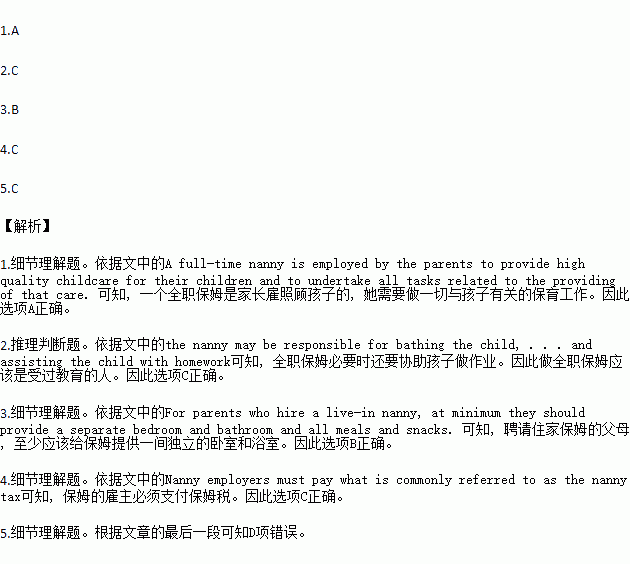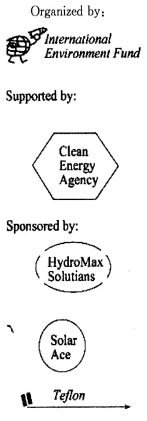题目内容
A full-time nanny is employed by the parents to provide high quality childcare for their children and to undertake all tasks related to the providing of that care. Nannies provide childcare in the family’s private home.
Full-time nannies with parents meet the physical, social, emotional and intellectual needs of the children. They typically do the children’s laundry, keep the children’s areas neat and clean, and prepare meals and snacks for the children. Depending on the age of the child and the family’s needs, the nanny may be responsible for bathing the child, transporting the child to activities and assisting the child with homework.
Since nannies work in the private home and serve as caretakers, and educators, nannies must be trustworthy. Nannies are often hired so that parents can fulfill their personal and professional tasks. For this reason, nannies must be dependable and reliable.
Full-time nannies work on average 40 to 60 hours per week and may live with the family as live-in nannies. For parents who hire a live-in nanny, at minimum they should provide a separate bedroom and bathroom and all meals and snacks. One of the benefits of nanny care is that the parents set the nannies weekly schedule. Nannies are typically required to have some scheduling flexibility.
Nanny employers must pay what is commonly referred to as the nanny tax, which includes social security taxes and medicare taxes, total about 7. 65% of the nanny’s wages. The other federal tax is referred to as FUTA. It is the Federal Unemployment Tax. State unemployment taxes may also apply and vary from state to state.
In addition to nanny employer taxes the nanny is responsible for her share of the FICA taxes. Nannies are responsible for paying their own income tax payments, however many employers agree to manage the payments for them.
Typical nanny benefits include 2 weeks of paid vacation, paid sick days and paid personal days and full contributions to health insurance. Nanny employers may also wish to contribute to a retirement savings plan for their nanny.
1. What does a full-time nanny usually do?
A. She should do all the tasks connected with childcare.
B. She must be able to communicate well with parents.
C. She should provide excellent care for the family.
D. She must avoid dealing with her private secrets.
2.We can learn from the second paragraph that .
A. the nanny should stop the kid from eating snacks
B. the parents must prepare every meal for the nanny
C. the nanny should be a person with education
D. the parents must take responsibility for the nanny
3.If you applied to be a full-time nanny .
A. you would work at most 8 hours a day B. you would get your private space
C. you would work seven days a week D. you would have no time of your own
4.What do you know about the nanny tax?
A. The nanny must pay such a tax according to her wages.
B. The tax almost covers one-fifth of the nanny’s wages.
C. The employers should pay the nanny tax for nannies.
D. The tax is said to be the highest of all walks of life.
5.Which one is NOT the benefit of the typical nanny?
A. Having a 2-week holiday with payment.
B. Getting paid for sick leave.
C. Having full contributions to health insurance.
D. Having personal days but without pay.



